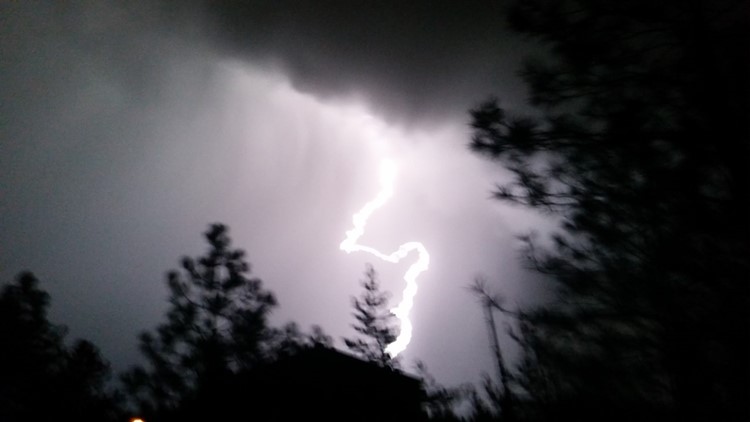On Wednesday night, residents experienced the transition into Inland Northwest thunderstorm season with a bang.
A strong cell quickly moved through the Spokane area from 8:00 p.m.- to 9:00 p.m. and headed over the state line.
Here is a look at the radar imagery as the storm moved over the South Hill at 8:30pm Wednesday:

Here's a look at the radar imagery as the storm moved over the Spokane Valley at 8:45pm Wednesday:

KREM 2 News got dozens of reports of lightning and thunder. Wow! Keep them coming!
PHOTOS: Thunder and lightning light up INW sky
With the help of the National Weather Service, the StormTracker 2 Team broke down five common myths about lightning.
1. MYTH: If you are caught outside during a thunderstorm, you should crouch down to reduce your risk of being struck by lightning.
FACT: Crouching does not make you safer during a thunderstorm. Run to a building or hard topped vehicle. If you are too far to run to one of these options, you do not have a great alternative. You are not safe outdoors!

2. MYTH: Lightning never strikes the same place twice.
FACT: Lighting can, and will, strike the same place twice. Especially if it is a tall, pointy, isolated object. Example: The Empire State Building is hit an average of 23 times per year.
3. MYTH: If it is not raining, or cloudy, you are safe from lightning.
FACT: Lightning often strikes more than three miles from the center of the thunderstorm, far outside the rain or thunderstorm cloud. "Bolts from the blue" can strike 10-15 miles from the thunderstorm.

4. MYTH: Rubber tires on a car protect you from lightning by insulating you from the ground.
FACT: Most cars are safe from lightning, but it is the metal roof and metal sides that protect you, NOT the rubber tires. Examples of cars that do not provide protection from lightning: convertibles, motorcycles, bicycles, open-shelled outdoor recreational vehicles and cars with fiberglass shells. When lightning strikes a vehicle, it goes through the metal frame into the ground. Do NOT lean on doors during a thunderstorm.

5. MYTH: If you touch the victim of a lightning strike, you will be electrocuted.
FACT: The human body does not store electricity. It is safe to touch a lightning strike victim to give them first aid. Do not be afraid to give CPR.



